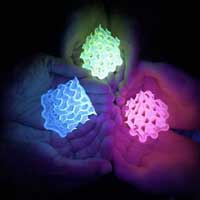
An international team of researchers has created the brightest known materials on Earth by designing a new type of material that can protect the properties of fluorescent molecules. The scientists are planning further research to explore the use of these new materials in a range of different applications, from solar energy harvesting to bioimaging to lasers.
